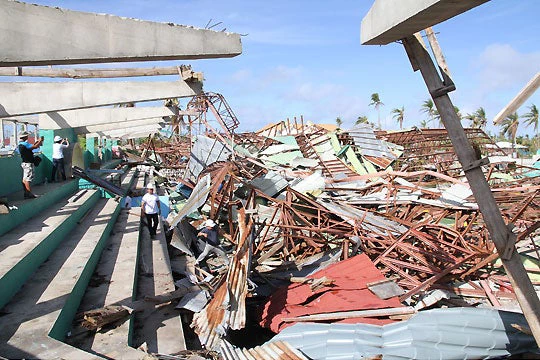
The images were unbelievable, entire cities decimated, thousands of hectares of arable land under water, and infrastructure destroyed. These were the scenes when the central Philippines was struck by super typhoon Yolanda (Haiyan) in November 2013.
In the immediate aftermath of disasters, while the cameras are rolling, NGOs, national governments, international organizations and individuals often make extraordinary pledges. But once the journalists go home, the questions of financial management often become a point of contention.
Sometimes pledges are made but never received, other times mismanagement or lack of transparency make it impossible to track whether money actually reaches its intended beneficiaries. Doubts over whether aid will reach its target are often a key factor in whether donors, be it countries or individuals, assist countries in need.
In the days following typhoon Yolanda and as pledges of support rolled in, both citizens and the media alike began to ask questions to the Philippines government - how could they ensure that the generosity being showed to the Philippines would be put to good use. The government, which was in the midst of rolling out a comprehensive access to information effort, unveiled its approach: the Foreign Aid Transparency Hub or FAiTH.
This was a first in the Philippines. The spreadsheets that so often remain in the offices of government officials were now on view for everyone with an internet connection to see. It has become one of the most popular government websites in the Philippines and has received praise as a model for development transparency from experts.
Now in its second version, the site offers a real time look at what pledges have been made, honored, and delivered. In a sense, it is a three-way contract between the Philippines government, its citizens, and donors to the relief efforts – a mutually reinforcing accountability mechanism.
Perhaps most important, FAiTh has become a key source of information for the media, which can and does verify and report on an almost daily basis the information provided. This kind of feedback loop is the basis for any effective accountability mechanism. In the absence of FAiTH, reporters would likely be left with rumors about misspent funds or un-honored pledges, but no concrete numbers to be verified. Armed with evidence, reporters can play their role as effective watchdogs, while ensuring that local populations, donors, and the government are receiving fact-based stories. This in turn helps donors and the government make adjustments where needed.
Another kind of technology has been put to use to help evaluate relief efforts while ensuring a level of accountability. English photojournalist Lewis Whyld of the Telegraph was one of the first journalists to reach Tacloban, the largest city affected by the storm and the center of relief efforts. He used an unmanned drone to document the devastation. Using aerial footage, Whyld was able to show the world the extent of the damage.
Something else that makes Whyld’s coverage different is that unlike many journalists, Whyld came back. His extraordinary photographs from Tacloban six months after the typhoon show that the recovery is real – basic infrastructure is being rebuilt and essential services have returned. But his images demonstrate that housing remains a critical challenge. Photo technology has proven to be an important accountability mechanism in relief and development projects, especially in remote or hard-to-get-to locations.
While Yolanda is no longer a top news story, the relief efforts continue in the Philippines. It will be a while before life returns to normal in the hardest hit areas. New technologies have proven to be a critical element in ensuring that the relief efforts continue and that accountability remains the highest priority.


Join the Conversation